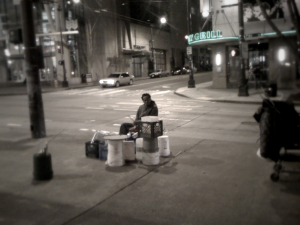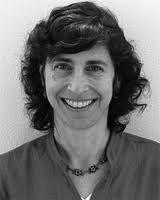 “Please – Show me Your Kavod (Essence/Presence/Glory),” Moses pleads to God in a moment of personal vulnerability after the sin of the Golden Calf. A brief interpretive summary of God’s reply: “You can’t see My Face and live. Instead, I will show you My Attributes, and by imitating My Attributes, starting with showing kindness and compassion to others, you will know where I have been. -Exodus 33-34
“Please – Show me Your Kavod (Essence/Presence/Glory),” Moses pleads to God in a moment of personal vulnerability after the sin of the Golden Calf. A brief interpretive summary of God’s reply: “You can’t see My Face and live. Instead, I will show you My Attributes, and by imitating My Attributes, starting with showing kindness and compassion to others, you will know where I have been. -Exodus 33-34
I watched in admiration as a 5th-grader looked directly into the eyes of the homeless gentleman receiving a plate of hot food. “Would you like an apple?” she asked. “No thank you,” he replied gratefully. Most homeless people politely refused apples. She smiled and wished him well. He smiled back, seeming to appreciate both the energy of her youth and her innocent sincerity. She later learned that one of the indignities of poverty is not having access to a dentist. You need healthy teeth to eat apples.
For many years I taught 5th-grade at Seattle Jewish Community School. Each month we served an outdoor free meal provided by Operation Sack Lunch. Before serving the meals, we studied Jewish texts that speak of guarding the kavod/dignity of others. For example: “May the dignity of your friend be as dear to you as your own dignity.” (Pirke Avot/Wisdom of our Ancestors)
When I asked the students what they thought this might mean, based on what made them feel respected, they had “simple” answers: Eye-contact. Asking. Letting a person decide what food he wants. Smiling. Wishing a person well.
In their direct and unadorned ways, 10-year-old children captured the essence of the teaching – truly being present for a human being who is often invisible to others.
Our texts teach that the opposite of kavod is bushah/humiliation or embarrassment. Causing bushah, in Jewish tradition, is equal to murder. Embarrassment turns faces white or flushed. According to the rabbis, this is symbolic of blood spilled in murder. The 5th-graders saw the potentially humiliating vulnerability of homeless people they served who, while unable to eat apples, were grateful for hot food, a smile and a heartfelt offer.
The students learned that God, too, has Kavod. With God, Kavod is translated as “Essence,” “Presence” or “Glory.” Students realized that since humans are made in God’s image, we are guided in caring for others if we think in terms of shared human/Divine Kavod.
In Exodus 33-34, God “leads” with kindness and compassion in revealing God’s Kavod to Moses, and in so doing, encourages us to do the same. My student had internalized this. As I watched her offer apples, she became my teacher.
Acknowledgment to Rabbi Nancy Flam.
 By Beth Huppin
By Beth Huppin
Beth Huppin has enjoyed teaching Judaics to children and adults of all ages in both formal and informal settings for over 30 years. She is the recipient of a 2010 National Covenant Award for Excellence in Jewish Education.
Feature image by Jonas Maaløe Jespersen.



